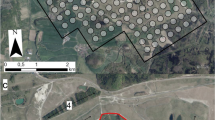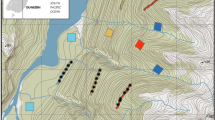Abstract
Effective management of grazers requires understanding of the mechanisms influencing population declines. Roan antelope, a specialist grazer, has declined in population numbers within Kruger National Park, South Africa. The most widely accepted hypothesis is that habitat deterioration throughout the entire northern plains landscape is responsible for declines in this species. Observations suggest, however, that on the northern plains of Kruger National Park, roan antelope grazes at the boundary between ephemeral wetland and the savanna matrix. The boundary is characterized by nutrient-rich soil and forage, and thus attracts grazing from both generalist and specialist species. We hypothesize that competition for resources at this ecotone, and not at other places in the landscape, is responsible for the observed declines in roan antelope. Changing management strategies to be more cognizant of patchiness and savanna heterogeneity, i.e. more spatially informed, will improve the likelihood that management will result in increasing roan population numbers.


Similar content being viewed by others
References
Allsopp R (1979) Roan antelope population in the Lambwe valley, Kenya. J Appl Ecol 16:109–115
Bellamonte G, Costantini A, Giammarioli S (1987) Comparison of modified automatic Dumas method and the traditional Kjeldahl method for nitrogen determination in infant food. J Anal Chem 70:227–229
Bissonette JA (1997) Scale sensitive properties: historical context, current meaning. In: Bissonette JA (ed) Wildlife and landscape ecology: effects of pattern and scale. Springer, New York, pp 3–31
Brown BJ, Allen TFH (1989) The importance of scale in evaluating herbivory impacts. Oikos 54:189–194
Davidson T (2001) Hierarchical selection and utilization of patches by zebra (Equus burchelli) on the northern plains landscape mosaic of the Kruger National Park. Master of Science Thesis, University of the Witwatersrand, Johannesburg, South Africa
Gertenbach WPD (1983) Landscapes of the Kruger National Park. Koedoe 26:9–121
Harrington R, Owen-Smith N, Viljoen P, Biggs HC, Mason HC, Funston P (1999) Establishing the causes of the roan antelope decline in the Kruger National Park, South Africa. Biol Conserv 90:69–78
Harris LD (1988) Edge effects and conservation of biotic diversity. Conserv Biol 2:330–332
Joubert SCJ (1976) The population ecology of the roan antelope in the Kruger National Park. PhD Thesis, University of Pretoria, South Africa
Kotze DC, Marneweck G (1999) Landuse and wetland/riparian habitat working group. Wetland/riparian habitats: practical field procedure for identification and delineations. Version 1.2. Water Research Commission, Pretoria, South Africa
Laca EA, Ortega IM (1995) Integrating foraging mechanisms across spatial and temporal scales—invited paper. 5th International Rangeland Congress, pp 129–132
Ludwig JA, Cornelius JM (1987) Locating discontinuities along ecological gradients. Ecology 68:448–450
Naiman RJ, Decamps H, Fournier F (1987) The role of ecotones in landscape management. UNESCO Man Biosphere Programme, Paris
Risser PG (1993) Ecotones at local to regional scales from around the world. Ecol Appl 3:367–368
Risser PG (1995) Biodiversity and ecosystem function. Conserv Biol 9:742–746
Scholes RJ, Walker BH (1993) An African savanna: a synthesis of the Nylsvley study. Cambridge University Press, Cambridge
Senft RL, Coughenour MB, Bailey DW, Rittenhouse LR, Sala OE, Swift DM (1987) Large herbivore foraging and ecological hierarchies. Bioscience 37:789–799
Ter Braack CJF (1987) The analysis of vegetation-environment relationships by canonical correspondence analysis. Vegetatio 69:69–77
Wilson DE, Hirst SM (1975) Ecology and factors limiting roan and sable antelope populations in South Africa. Wildl Monogr 14:4–111
Acknowledgements
Thanks to colleagues, professors as well as anonymous reviewers for ideas and contributions towards earlier manuscript drafts. Thanks to the National Research Foundation, South Africa for funding and the Kruger National Park for logistic support.
Author information
Authors and Affiliations
Corresponding author
Rights and permissions
About this article
Cite this article
Kröger, R., Rogers, K.H. Roan (Hippotragus equinus) population decline in Kruger National Park, South Africa: influence of a wetland boundary. Eur J Wildl Res 51, 25–30 (2005). https://doi.org/10.1007/s10344-004-0070-z
Received:
Accepted:
Published:
Issue Date:
DOI: https://doi.org/10.1007/s10344-004-0070-z




